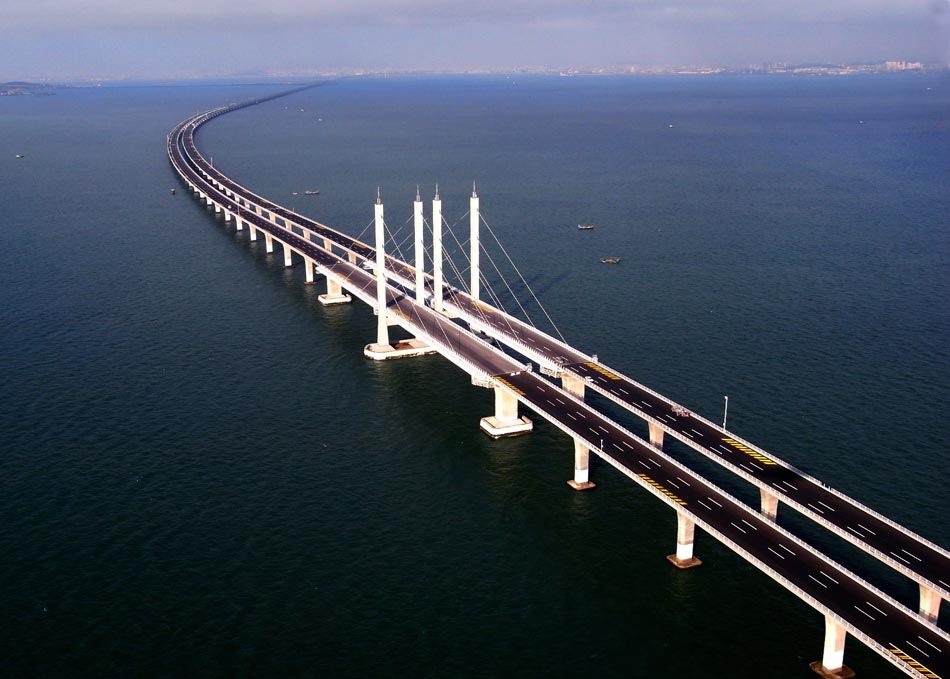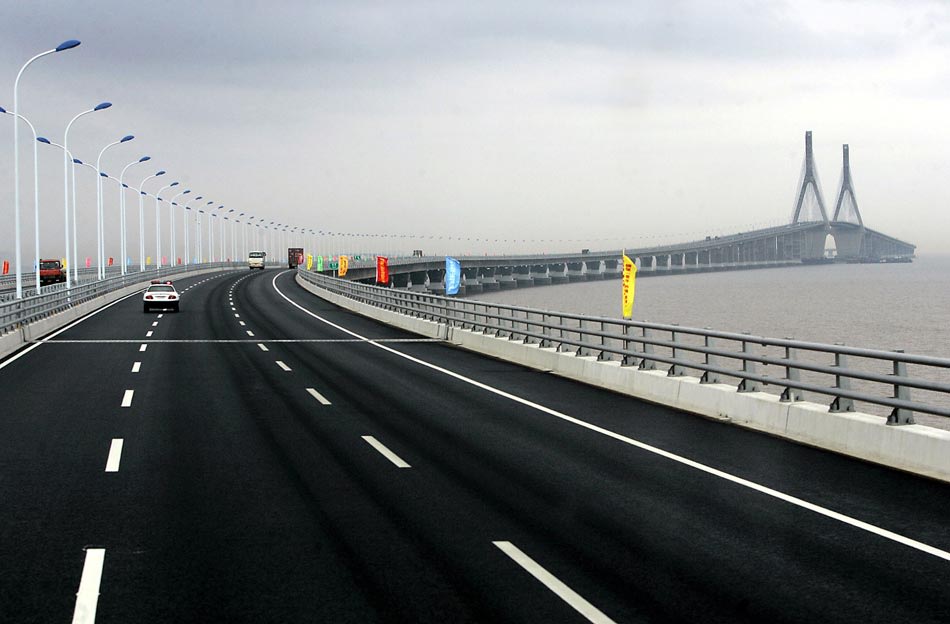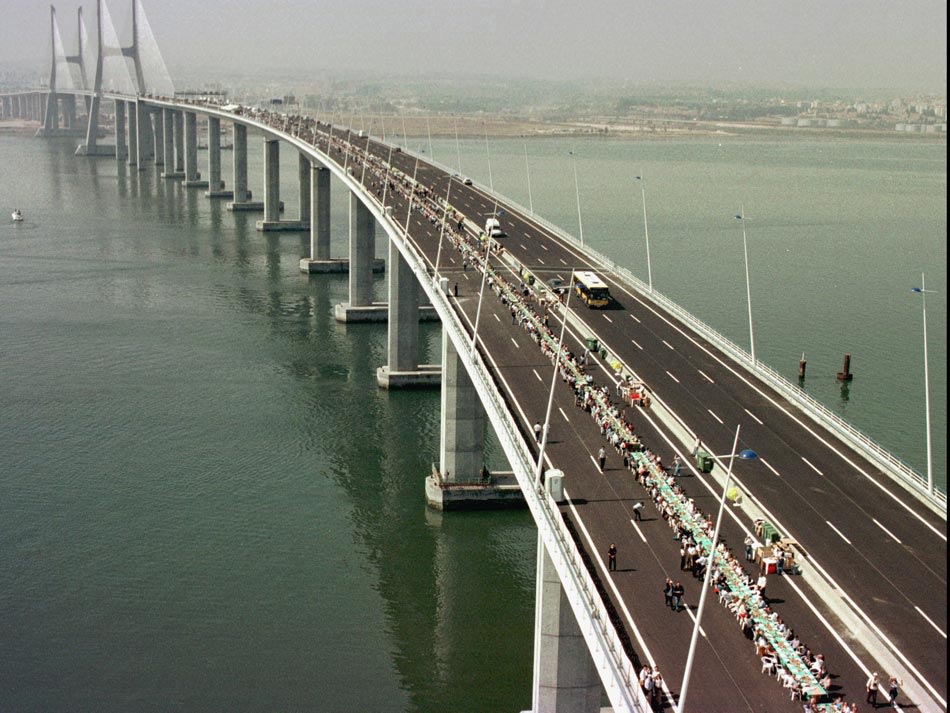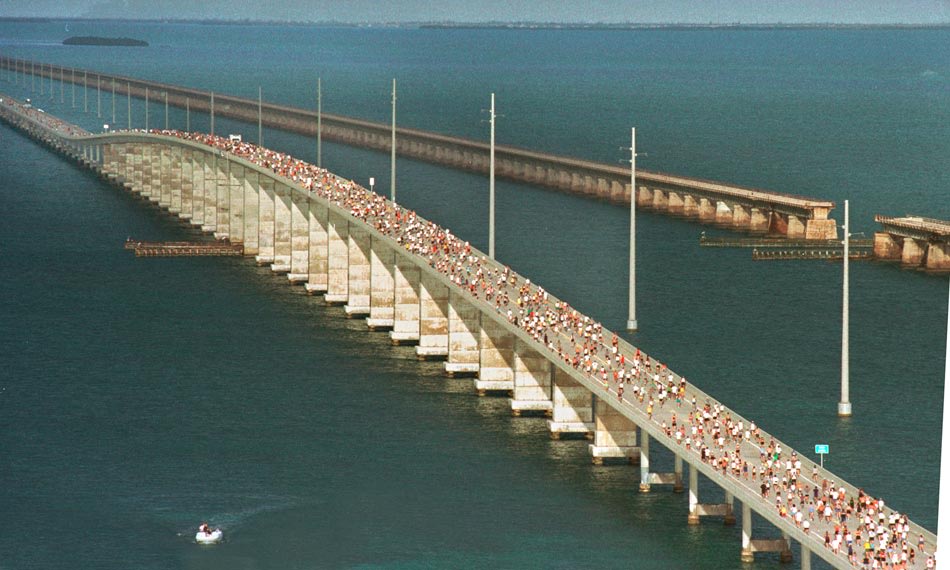A site to condense the vast amount of interesting and useful information for our daily consumption...
Thursday, July 28, 2011
Wednesday, July 27, 2011
Four Ways to Put Your Stuff in the Cloud
The technology industry brings us a smorgasbord of wonderful stuff that goes on forever. I'm profoundly grateful. But I've never understood its long-standing infatuation with one of its most famous inventions: buzzwords. About 90% of the ones it creates are confusing rather than clarifying, especially since few catch on with the non-geek majority. Cloud computing -- the most pervasive buzzword du jour -- is particularly pointless. Cloud is a synonym for the Internet, a concept we've all understood reasonably well for 15 or more years. Why rename it now?
The fact that I grouse about the terminology doesn't mean I'm skeptical about the idea it describes. Actually, I love the idea of keeping photos, music, video and other files on the Internet. Doing so means I can get to my goodies from my laptop, my smart phone and my iPad, without trying to remember which items I stored where. And having an online backup or two of essential files is a humongous relief if your hard drive goes kerflooey -- as so many drives will, sooner or later. (See "Amazon's Cloud Music and Storage: A Good Start.")
Putting your digital possessions in the cloud isn't tough. There are a bunch of sensible ways to do it, each with its own upsides, plus a downside or two. Herewith, a quick guide to four of them.
Box.net and SugarSync will give you 5 GB of space for free, which is more than enough to judge whether their offerings will make your life easier. (Longtime fan favorite Dropbox offers a more parsimonious 2 GB; it also suffered from an unnerving security glitch last month that briefly let anyone log into any account without providing a password.) Besides providing software for Windows PCs and Macs, all these services have apps for iPhones and Android handsets that give you on-the-go access to the files you've synched from one or more computers.
The biggest gotcha with synching is that it can get unaffordable fast, especially if you want to shuttle copious amounts of disk-hogging videos as well as relatively slender files such as photos and MP3s. If I wanted to use SugarSync to back up the entire contents of my MacBook Air's solid-state drive, I'd need to spring for the 250-GB plan, which costs $24.99 a month or $249.99 a year. Instead, I'm selective -- I make do with the 30-GB version, which is $4.99 a month or $49.99 a year. (See TIME's special report on the top iPhone applications.)
One other tip: synching services only work if you're running their software on all your computers and it's functioning properly. I've occasionally discovered that such utilities have quietly conked out without me noticing. It pays to check them from time to time to make sure they're moving files back and forth as promised.
Last week, for instance, Amazon.com started allowing anyone who pays for its Cloud Drive service to upload an unlimited quantity of music. There are some catches, but for $20 a year you can store all your MP3s on the Web, plus another 20 GB of files of any type -- a good, budget-minded alternative to a synching service.
Read about the promise and pitfalls of cloud computing.
For photos and videos, Google's Picasa Web Albums service is even more tightwad-friendly: 20 GB of storage costs a measly $5 a year. And you might not even need to pay that much, since photos of less than 2048-by-2048 resolution and videos that run for less than 15 minutes don't count against your freebie allotment of 1 GB of space.
And then there's Microsoft's SkyDrive, which gives you 25 GB of Web-based space for anything, for free.
All these services have a no-frills feel compared to their pricier rivals. Cloud Drive and Picasa don't do fancy automatic synching of files of all sorts, and SkyDrive does it only for 5 GB of files, and only in conjunction with a low-profile Microsoft service called Live Mesh. But if they give you what you need, the price is certainly right. (See the top 10 Apple moments.)
Storage systems that do this abound, such as Western Digital's My Book World Edition and Iomega's Home Media Drive Cloud Edition. I like Buffalo's CloudStor, which starts at $159.99 for a version that packs a 1-TB hard drive. Its built-in software, powered by a clever service called PogoPlug, makes setting up the drive and reaching your files from any browser just about painless, with no knowledge of networking minutiae required. All 1 TB (or more) of disk space is up for grabs -- a mammoth amount of real estate by cloud-based storage standards.
My major reservation about these gizmos is the same one that makes them appealing to many folks: they don't duplicate your files to a remote server. For priceless treasures like your best family photos, you don't just want to have a backup -- you want backups of your backups. And -- not to get too depressing here -- it's best if some of the backups are stored somewhere other than your house, just in case disaster strikes. Unlike my more paranoid pals, I'm comfortable allowing outfits like SugarSync and Google to manage my data. They'll surely do a better job of backing everything up than I would if left to my own devices. (See the all-TIME 100 gadgets.)
Even more than with networked drives, it's important to remember that the PogoPlug software isn't a substitute for a backup strategy. And it requires you to leave your computer on, something that's more plausible if you own a desktop PC that stays put than if you tote a laptop.
If none of these approaches appeals to you, there's another viable strategy: wait. Even more options are on the way, the most notable of which is Apple's iCloud service. Due this fall, it aims to deliver the simplest, most comprehensive approach to storing data on the Net, at least if you're equipped with a full complement of Apple devices, such as a Mac, an iPhone, an iPod Touch, an iPad or any combination of those products. Steve Jobs, as you'd expect, says that iCloud "just works." If he's right, count me in -- but until then, I'm a happy SugarSync customer.
[ McCracken blogs about personal technology at Technologizer, which he founded in 2008 after nearly two decades as a tech journalist; on Twitter, he's @harrymccracken. His column, also called Technologizer, appears every Thursday on TIME.com.
See pictures of the history of the computer.
See TIME's Pictures of the Week. ]
The fact that I grouse about the terminology doesn't mean I'm skeptical about the idea it describes. Actually, I love the idea of keeping photos, music, video and other files on the Internet. Doing so means I can get to my goodies from my laptop, my smart phone and my iPad, without trying to remember which items I stored where. And having an online backup or two of essential files is a humongous relief if your hard drive goes kerflooey -- as so many drives will, sooner or later. (See "Amazon's Cloud Music and Storage: A Good Start.")
Putting your digital possessions in the cloud isn't tough. There are a bunch of sensible ways to do it, each with its own upsides, plus a downside or two. Herewith, a quick guide to four of them.
1. Sync everything everywhere.
The simplest way to store your stuff in the cloud is to keep saving it on your computer's hard drive, just as you've been doing forever. All you need is a synching service that instantly and silently clones the contents of folders you specify to all your computers as well as to an online drive where everything's available all the time.Box.net and SugarSync will give you 5 GB of space for free, which is more than enough to judge whether their offerings will make your life easier. (Longtime fan favorite Dropbox offers a more parsimonious 2 GB; it also suffered from an unnerving security glitch last month that briefly let anyone log into any account without providing a password.) Besides providing software for Windows PCs and Macs, all these services have apps for iPhones and Android handsets that give you on-the-go access to the files you've synched from one or more computers.
The biggest gotcha with synching is that it can get unaffordable fast, especially if you want to shuttle copious amounts of disk-hogging videos as well as relatively slender files such as photos and MP3s. If I wanted to use SugarSync to back up the entire contents of my MacBook Air's solid-state drive, I'd need to spring for the 250-GB plan, which costs $24.99 a month or $249.99 a year. Instead, I'm selective -- I make do with the 30-GB version, which is $4.99 a month or $49.99 a year. (See TIME's special report on the top iPhone applications.)
One other tip: synching services only work if you're running their software on all your computers and it's functioning properly. I've occasionally discovered that such utilities have quietly conked out without me noticing. It pays to check them from time to time to make sure they're moving files back and forth as promised.
2. Use one or more online storage services for little or nothing.
With services such as Box, Dropbox and SugarSync, you've got two options: limit your uploads to a few gigabytes and pay nothing, or pay a monthly fee for more space. Or you could ignore them altogether for one or more services that provide more spartan online storage at much lower price tags.Last week, for instance, Amazon.com started allowing anyone who pays for its Cloud Drive service to upload an unlimited quantity of music. There are some catches, but for $20 a year you can store all your MP3s on the Web, plus another 20 GB of files of any type -- a good, budget-minded alternative to a synching service.
Read about the promise and pitfalls of cloud computing.
For photos and videos, Google's Picasa Web Albums service is even more tightwad-friendly: 20 GB of storage costs a measly $5 a year. And you might not even need to pay that much, since photos of less than 2048-by-2048 resolution and videos that run for less than 15 minutes don't count against your freebie allotment of 1 GB of space.
And then there's Microsoft's SkyDrive, which gives you 25 GB of Web-based space for anything, for free.
All these services have a no-frills feel compared to their pricier rivals. Cloud Drive and Picasa don't do fancy automatic synching of files of all sorts, and SkyDrive does it only for 5 GB of files, and only in conjunction with a low-profile Microsoft service called Live Mesh. But if they give you what you need, the price is certainly right. (See the top 10 Apple moments.)
3. Put a hard drive on the Web.
I have more than a few tech-savvy friends who instinctively bristle at the notion of entrusting their prized files to a SugarSync, a Google or anybody else. Rather than pay for the privilege of uploading data to distant servers in undisclosed locations, they prefer to keep it at home under their own supervision. Fine. It's possible to do that while also putting your files in the cloud, by using a storage device that piggybacks on your home network's Internet connection to make your content available (with password protection) on any Net-connected device.Storage systems that do this abound, such as Western Digital's My Book World Edition and Iomega's Home Media Drive Cloud Edition. I like Buffalo's CloudStor, which starts at $159.99 for a version that packs a 1-TB hard drive. Its built-in software, powered by a clever service called PogoPlug, makes setting up the drive and reaching your files from any browser just about painless, with no knowledge of networking minutiae required. All 1 TB (or more) of disk space is up for grabs -- a mammoth amount of real estate by cloud-based storage standards.
My major reservation about these gizmos is the same one that makes them appealing to many folks: they don't duplicate your files to a remote server. For priceless treasures like your best family photos, you don't just want to have a backup -- you want backups of your backups. And -- not to get too depressing here -- it's best if some of the backups are stored somewhere other than your house, just in case disaster strikes. Unlike my more paranoid pals, I'm comfortable allowing outfits like SugarSync and Google to manage my data. They'll surely do a better job of backing everything up than I would if left to my own devices. (See the all-TIME 100 gadgets.)
4. Put your computer on the Web.
Still reading? Maybe you don't care to use a fully Web-based service and don't want to invest in a networked storage device. If so, you still have options in the form of software that can put the contents of any PC on your home network onto the Internet. For instance, PogoPlug (the software I admire in Buffalo's CloudStor) is also available as a stand-alone, downloadable version for Windows and Macs. Install it on a computer and run it at all times, and it gathers up all the photos, music, videos and other files on the computer and lets you access them from any browser and from PogoPlug's apps for the iPhone, iPad and Android. As with the CloudStor version, it's about as hassle-free as networking gets, and there's a less-powerful free version.Even more than with networked drives, it's important to remember that the PogoPlug software isn't a substitute for a backup strategy. And it requires you to leave your computer on, something that's more plausible if you own a desktop PC that stays put than if you tote a laptop.
If none of these approaches appeals to you, there's another viable strategy: wait. Even more options are on the way, the most notable of which is Apple's iCloud service. Due this fall, it aims to deliver the simplest, most comprehensive approach to storing data on the Net, at least if you're equipped with a full complement of Apple devices, such as a Mac, an iPhone, an iPod Touch, an iPad or any combination of those products. Steve Jobs, as you'd expect, says that iCloud "just works." If he's right, count me in -- but until then, I'm a happy SugarSync customer.
[ McCracken blogs about personal technology at Technologizer, which he founded in 2008 after nearly two decades as a tech journalist; on Twitter, he's @harrymccracken. His column, also called Technologizer, appears every Thursday on TIME.com.
See pictures of the history of the computer.
See TIME's Pictures of the Week. ]
Tuesday, July 26, 2011
Essence in building a business (product)
" 2 Eases, 2 Rights and 2 Ons "
Ease to build
Ease to use
Right price
Right .....
On place
On time
.
Ease to build
Ease to use
Right price
Right .....
On place
On time
.
Cellphones get smart, but so do hackers
In today's Sunday Times, there's an article titled "Cellphones get smart, but so do hackers".
Smartphones bring the world to our fingertips as these can access the internet. Users can download games and other applications but this potentially opens the door for attack. Such cellphones can be easily bugged by a hacker sneaking in programs called spyware. The smart phone user may be unaware of it but such spyware can capture all of the user's incoming and outgoing phone calls, texts and email messages. It can even remotely turn on a phone's microphone to listen to a user's surroundings (without any call being made).
The most common way to to remotely plant spyware is to 'social engineer' the victim into installing the spyware. Scammers can dupe victims into installing a virus on their smartphones by pretending to be a legitimate contact, be it a bank or friend, in an email or text message. Scammers typically infect the smartphones via bogus text messages purportedly from a phone user's bank. The spyware poses as an online banking application. Once installed, it sniffs all incoming messages, including one-time passwords for authenticating banking transactions.
The following note was disseminated to all staff recently and serves as a reminder for compliance:
Vulnerabilities of Smartphones
Recent security studies on smartphones have revealed a host of vulnerabilities associated with their usage. In fact, with Internet compatibility, cases of trojanised smartphones will increase and smartphones risk potentially becoming an even bigger target for hackers than computers.
Smartphones built on “open” programming platforms and operating systems (OS) fundamentally designed to accept applications (apps) have also resulted in a trade-off on the level of control over what these apps are doing in the background. Many apps available nowadays can even operate below or at the OS level rendering them almost "invisible" to the users. These include the likes of tracking and surveillance apps which infringe our privacy and pose security threats. "Utilities" that are able to perform lower level functionalities with dubious modular programming codes can also be integrated into "free apps" without the users' knowledge.
Currently, smartphones without image capturing capabilities are allowed to be brought into camps and premises provided they are not used to process classified information higher than Restricted and are not connected to any office networks. In addition to its computing capabilities, smartphones have recording functions as well.
Whilst recording devices are not carried into meetings, these smartphones are! Trojanised smartphones, when remotely activated without the knowledge of the user, can potentially compromise all conversations in the vicinity of the device. Accidental auto dials or enabling auto-answer can inadvertently breach security during classified meetings/discussions. Built-in GPS capabilities can track movement, coupled with information aggregation, can potentially result in a compromise of locations and operations. Common to all mobile phones, any loss, theft or seizure of smartphones will likewise result in a compromise of important information such as, official contacts, schedules, text messages etc. residing within
.
Monday, July 25, 2011
Sunday, July 24, 2011
Saturday, July 23, 2011
Friday, July 22, 2011
Taman Jurong shopping center air food center serve great Fried Rice
They serve great fried rice. Must try together with the belacam chilling paste :)
Friday, July 8, 2011
AeroVironment's SkyTote
The SkyTote is a Vertical Take-Off and Landing (VTOL) aircraft developed by AeroVironment Inc. This hybrid airplane was designed specifically to deliver or retrieve cargo.
AV was contracted by the Air Force Research Laboratory (AFRL) to develop a Vertical Take-Off and Landing (VTOL) aircraft that can quickly deliver or retrieve cargo. SkyTote is designed with a payload capacity of 50lb, a cruise endurance of 1.5 hours, and can travel at a speed of up to 200kts, can hover at altitudes up to 2,500 feet and cruise at 10,000 feet. This unique UAS is configured to utilize helicopter control in hover mode and conventional aircraft control while in forward flight.
.
Thursday, July 7, 2011
Wednesday, July 6, 2011
S’poreans have ‘unhealthy level of self-centredness’: SKM survey
 [ By Fann Sim | SingaporeScene – Mon, Jul 4, 2011 ]
[ By Fann Sim | SingaporeScene – Mon, Jul 4, 2011 ]Survey shows that Singaporeans are harsher on fellow Singaporeans. (Yahoo file photo)
Singaporeans display an "unhealthy level" of self-centeredness and self-absorption in their perception of their graciousness, a survey by the Singapore Kindness Movement (SKM) revealed.
In the third "State of Graciousness in Singapore" survey conducted in January this year, 43 percent of Singapore citizens and PRs rated themselves well in terms of how gracious they are, but when asked to rate the graciousness of other Singaporeans and PRs, only 15 percent gave good ratings.
When respondents were asked if they have done a random act of kindness in the last six months, 88 percent or 876 Singaporeans said they had, but only 55 percent or 553 Singaporeans said they had been on the receiving end of any such act.
The survey covered 1,404 people in Singapore, including 1,001 citizens and permanent residents (PR), 201 work permit and employment pass holders and 201 tourists.
"Singaporeans consistently give harsher assessments of fellow Singaporeans and are more forgiving towards themselves," Dr William Wan, general manager of SKM, said.
"The findings showed an unhealthy level of self-centeredness and self-absorption, and not being aware of and not appreciating the efforts of others. This is the attitude that we want to change," he added.
Most Singaporeans agreed with the statement that they did more kind and gracious acts than unkind and ungracious acts. They also prided themselves on being gracious person and would encourage others to do so.
However, 62 percent or 621 respondents agreed that it was not possible for Singapore to become a more gracious place due to the hectic and stressed lifestyle in Singapore.
What sort of behaviours would tick Singaporeans off?
445 Singaporeans felt that fellow Singaporeans did not display considerate dining etiquette. Singaporeans also listed inconsideration towards others on public transport and failing to display safe lane etiquette while driving as the least gracious behaviour.
Singaporeans also pointed to public transport, public spaces and public eating places as the top three areas that needed the most improvement in the survey.
.
Widescreen: Longest bridges in world

The world's longest cross-sea bridge, spanning 36.48 kilometers across the mouth of the Jiaozhou Bay in China's eastern Shandong province, opened to traffic four years after construction started. Here's a peek into some of the world's longest bridges.

Lake Pontchartrain Causeway
Located in Louisiana, United States, the Lake Pontchartrain Causeway, consists of two parallel bridges that run parallel to each other. The bridges are supported by 9,500 concrete pilings and spans over 38.35 kilometres. The southern terminus of the Causeway is in Metairie, Louisiana, a suburb of New Orleans. The northern terminus is at Mandeville, Louisiana.
 Donghai Bridge
Donghai BridgeCompleted on December 10, 2005, the Donghai Bridge has a total length of 32.5 kilometres and connects Shanghai to the Yangshan port in China. The 'Donghai Bridge' is popularly known as 'The stone'.
 Chesapeake Bay Bridge
Chesapeake Bay BridgeThe Chesapeake Bay Bridge is a four lane bridge that connects the Delmarva Peninsula's Eastern Shore of Virginia with Virginia Beach and the metropolitan area of Hampton Roads, Virginia. The bridge has a total length of 37 kilometres.
 Vasco da Gama Bridge
Vasco da Gama BridgeThe Vasco da Gama Bridge is a cable bridge with a total length of 17.2 kilometres. The bridge was opened to traffic on 29 March, 1998. The bridge spans across the Tagus River near Lisbon, Portugal.
 Penang Bridge
Penang BridgeThe Penang Bridge opened to traffic on September 14, 1985 and connects Gelugor in Penang island and Seberang Prai to mainland Malaysia. The total length of the bridge is 13.5 kilometres.
 Rio-Niteroi Bridge
Rio-Niteroi BridgeThe Rio-Niteroi Bridge is a box girder bridge that connects the cities of Rio de Janeiro and Niteroi. The bridge opened on March 4, 1974 and the total length of the bridge is 13 kilometres.
 Confederation Bridge
Confederation BridgeThe 12.9 kilometre long bridge opened on 31 May 1997, connecting the Prince Edward Island with New Brunswick, Canada. The Confederation bridge is a two-lane highway toll bridge.
 San Mateo-Hayward Bridge
San Mateo-Hayward BridgeCommonly known as the San Mateo Bridge, the San Mateo-Hayward Bridge connects San Francisco Peninsula with the East Bay. The total length of the bridge is 11.265408 kilometres.
Netizens applaud move to suspend DBSS land sales
 [ By Fann Sim | SingaporeScene – Mon, Jul 4, 2011 ]
[ By Fann Sim | SingaporeScene – Mon, Jul 4, 2011 ]UPDATE
Netizens have applauded National Development Minister Khaw Boon Wan's recent move to suspend future land sales for the Design, Build and Sell Scheme.
Many welcomed his pro-active approach and also suggested a "back to basics" approach for the Housing Development Board (HDB), while others even called for the scrapping of the DBSS and Executive Condominium scheme.
The comments follow Minister Khaw's decision to suspend future DBSS land sales, an announcement he recently made on his Facebook page.
However, he pointed out that a few DBSS land sites sold last year -- which includes the Centrale 8 site -- will continue with the launch of their sales in the next few months, adding that the old tenders are beyond his control.
It's understood the HDB will also not proceed with the sale of the Bendemeer Road land parcel, which is slated for sale later this month.
The national debate over the DBSS scheme was triggered when property developer Sim Lian Group launched its Centrale 8 development at Tampines last month for a whopping S$880,000 for a five-room flat.
When contacted by Yahoo! Singapore, the Ministry for National Development (MND) confirmed that it is reviewing the scheme as part of an overall review of housing policies and not as a result of Minister Khaw's blog post over the weekend, where he responded to the errors and inaccurate figures used in a recent Business Times (BT) article.
However, he pointed out that a few DBSS land sites sold last year -- which includes the Centrale 8 site -- will continue with the launch of their sales in the next few months, adding that the old tenders are beyond his control.
It's understood the HDB will also not proceed with the sale of the Bendemeer Road land parcel, which is slated for sale later this month.
The national debate over the DBSS scheme was triggered when property developer Sim Lian Group launched its Centrale 8 development at Tampines last month for a whopping S$880,000 for a five-room flat.
When contacted by Yahoo! Singapore, the Ministry for National Development (MND) confirmed that it is reviewing the scheme as part of an overall review of housing policies and not as a result of Minister Khaw's blog post over the weekend, where he responded to the errors and inaccurate figures used in a recent Business Times (BT) article.
.
Monday, July 4, 2011
Saturday, July 2, 2011
Subscribe to:
Posts (Atom)




